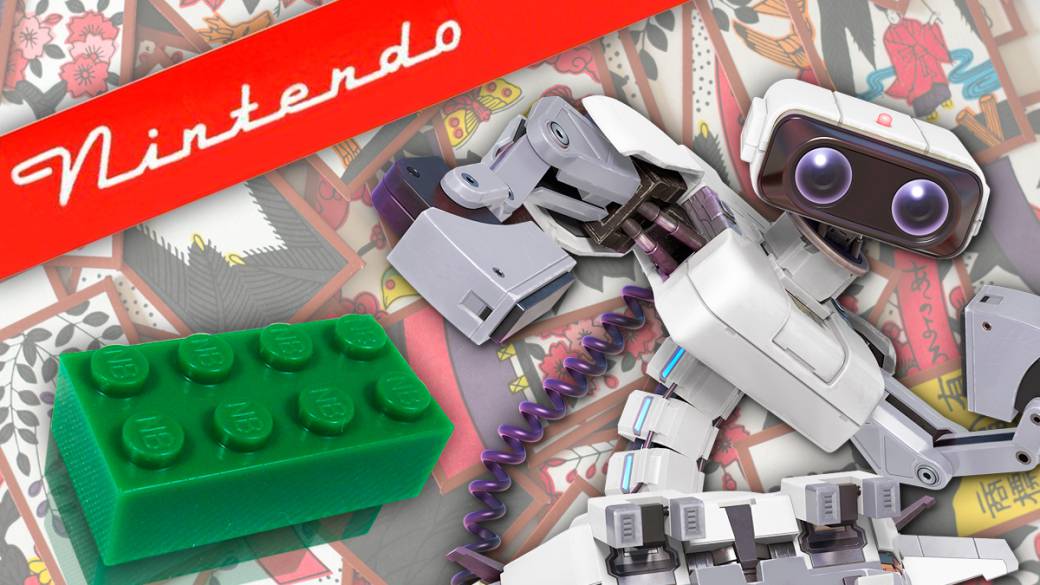
Cards, board games, toys and other products. We review all the facets of Nintendo that go beyond the development of consoles and video games.
In 2018, Big N did it again. Just one year after the launch of the Nintendo Switch, it surprised us with a new way to play: Nintendo Labo. It is a new interactive experience that, above all, tries to stand out for its benefits to make that, with just a few cards and a console, all those who want can enjoy video games in a way never seen before. Even those who want can make their own cardboard toys and games thanks to the laboratory that also offers this.
A short time later, social media was flooded with videos that Nintendo Labo users shot to show the true wonders they had created. Although it could be even more fascinating the growing curiosity that was created after the launch of this product about why the Japanese company had created something like this, so different from what we have been used to in recent years: video games and consoles.
It should be noted that, although to a lesser extent, that curiosity arose with the birth of the Amiibo, back in 2014. Fans of the figures and Nintendo, even video games in general, went crazy about the idea of have at your fingertips a representation of your favorite characters. But already then the question of how the Great N had come up with something like that had arisen.
This question became stronger with Labo, since it was cardboard and a concept closer to that of toys as such, but it was what lit the wick for many to want to investigate and discover that, in reality, Nintendo was born as a company very different from the one we know. A company that created cards, which came to offer experiences of all kinds such as hotels, but which, at a certain moment, entered the emerging video game industry. A past that is still present, as it is part of the company's DNA, and which, being unknown by many, deserves to be explored.
Starting at the beginning
As Florent Gorges explains in his first volume of The Nintendo Story, after a long period of restrictions on, among other things, the manufacture and sale of Hanafuda cards, the games that had been created up to then clandestinely came to light in 1885. With them, the passion for playing and creating cards by Fusajiro Yamauchi, who, following his entrepreneurial spirit, founded Nintendo in 1889.
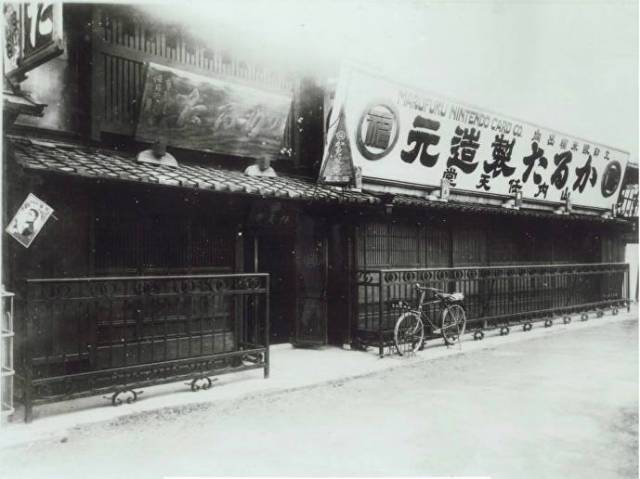
The Big N had almost nothing to do with the company it is today. For starters, it was founded as a very humble store that, according to some documents, received the name of Yamauchi Nintendo and became a legal entity in 1933. Until then, Yamauchi's business focused solely and exclusively on the manufacture of cards. Hanafuda, then, since there were no machines to help facilitate the process, they were made in an artisanal way. This caused his card games to be priced well above those of the competition, and although he initially did very well, economic problems were not long in coming.
To alleviate the situation, in addition to offering his card games at different prices, Yamauchi joined the growing demand for places to bet money, but not as you can imagine, but offering his decks to all those players who wanted to use different during the games to prevent cheating. The orders did not take long to arrive and they were so many that the store had to expand to be able to serve them all. From then on, the company continued to expand and reap great success offering products of all kinds. From table games, chairs and other derived products to the creation of the arcade machines and consoles that we know so well.

Cards and board games
About five centuries ago, with the beginning of relations between Europe and Japan, the Japanese imbued themselves with some of the customs of the Portuguese, specifically the paper games known at the time as the Letter. Such was its success in the Japanese territory that some variants such as Tensho Karuta and Unsun Karuta were created. But, over time, and already in the seventeenth century, a series of crises and transformations took place that caused Europe to regress and Japan to close hermetically abroad for more than two centuries.
For this reason, the Japanese had to modify the existing games, since they became prohibited because, in addition to coming from Europe, they were used to gamble money. This is how the Hanafuda were born, made up of a total of 48 cards in which the rules were modified and the illustrations were replaced. Such was the quality of the cards that Nintendo produced that it received numerous recognitions from different governments, becoming one of the most famous card manufacturers among players.
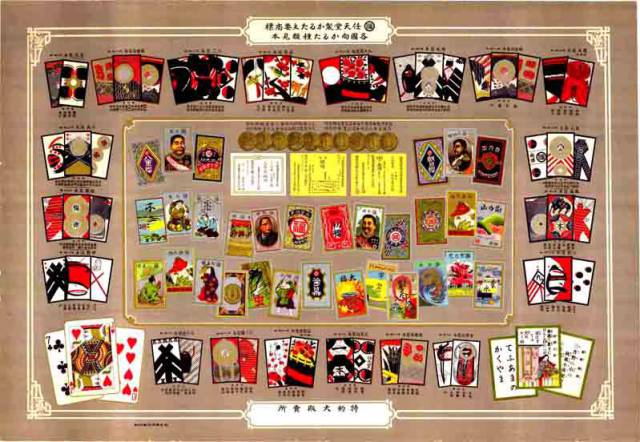
Currently, despite being immersed in the development and distribution of consoles and video games, Nintendo continues to produce different types of Hanafuda cards, specifically: Daitoryo, with the portrait of Napoleon; Tengu, with the face of an old man; and the Miyako no Hana, with flowers. However, back then, the Big N also contributed to the Karuta business with its own.
We must also highlight the Hyakunin Isshu series, a variant of Karuta, that the company created and continues to distribute today. It is a series of letters that require minimal literary knowledge, as they are based on classic Japanese poems. Today, Big N continues to distribute some of these letters as well.
Although we have so far referred to the Hanafuda and the rest of the Japanese letters in the same way, they should not be confused with those from the West. To differentiate them, Japan chose to name the foreign trumps. Thus, our letters were called trumps which, since the end of the 19th century, due to the enthusiasm shown by the Japanese for everything that came from the West after the stage of hermeticism they went through, were very famous in the Japanese market.
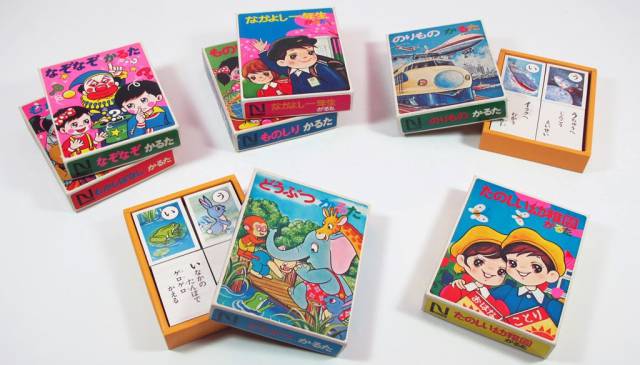 Beforemario.com's picture
Beforemario.com's picture
Consequently and after many efforts and attempts to adapt its machinery, since the trumps were made of plastic, not paper or wood like Japanese letters, Nintendo embarked on that business as well. Classics, Playing Guide, magic, adaptations of licenses such as Popeye or a large number of Disney characters, among many others were the series of cards that the company created at the time and that managed to become popular with children as well.
In turn, with the desire to diversify his business, Hiroshi Yamauchi, grandson of Fusajiro Yamauchi and third president of Nintendo, embarked on the development of board games. Starting in the 1960s, the company produced a wide variety of classic games such as checkers or chess, but also some typical Japanese games such as Mahjong. All this while continuing to pay attention to emerging needs among the Japanese such as toy roulette following the prohibition of gambling, nor to market opportunities in North America such as its collaboration with Walt Disney, which led it to manufacture , in addition to cards, different board games with their most famous characters. At the same time that this business line of the Big N was developed, so did that of toys.
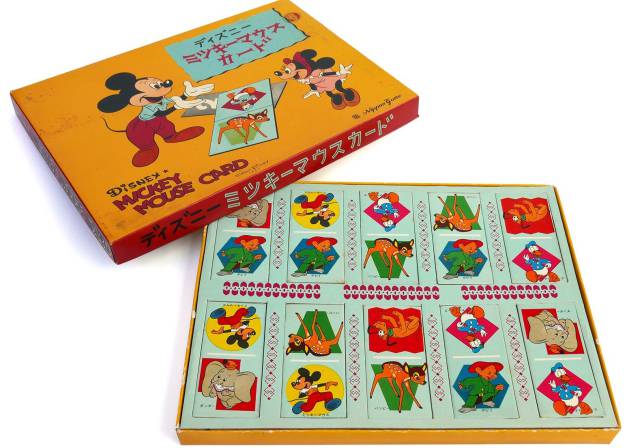 Beforemario.com's picture
Beforemario.com's picture
Fun for young and old
In the mid-sixties, Gunpei Yokoi was hired by the company to be the maximum responsible for the maintenance part. Over time, the Japanese creative manages to get hold of a lot of useless material from his work on overhauling the company's machinery, resulting in the creation of the famous Ultra Hand toy in 1966. Yamauchi sees a business opportunity with his invention and decides to market it on a large scale.
The Ultra Hand was a plastic toy that functioned as an extendable hand to pick up objects. Children could extend and contract it thanks to its shape, similar to that of scissors, and a wheel that was unlocked to allow movement. Such was its success that more than a million units were sold, even outside Japan, among all the versions of the toy, five in total and that only materialized in the box with color differences and in what the logo was refers. This meant that, in addition to Nintendo fully embarking on the toy market, Gunpei Yokoi began a successful career that led him to create, among others, the Game Boy.
 Image from the OEPM Historical Archive
Image from the OEPM Historical Archive
Just a year later, Gunpei created the company's second big hit in this market: the Ultra Machine. It is a ball pitcher, similar to ping pong balls, which included a plastic bat and allowed children to enjoy baseball in their own homes. The toy became a phenomenon because, in addition to being a very popular sport in the Japanese territory, it did not pose any danger within the home. The new hit from Gunpei Yokoi and Nintendo was commercialized throughout the second half of the sixties and during the seventies, reaching the West with another name: Slugger Mate.
In addition to other sports-related toys such as Dynamic Soccer and Hockey Game, and different versions of the Rabbit Coaster Game, which consisted of a structure with different levels for marble races, the Big N, in collaboration with the Sharp company, created weapons of all kinds. From the Shot Racer, which shot cars, to those that were part of the Kosenju series or the one included in Duck Hunt, a device that would inspire the famous NES video game with the same name consisting of a weapon and a small mobile projector. All of them used a light system that revolutionized the industry.
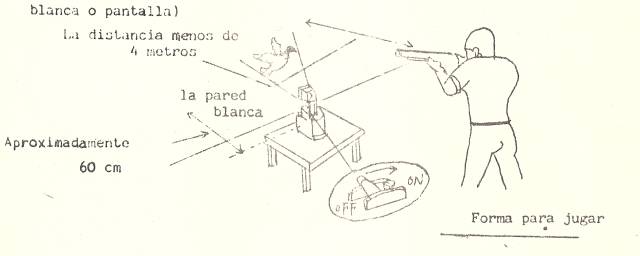
Finally, it should be noted that, although Ele-Conga, Space Ball, Tenbillion and many others were some of the many toys that Nintendo came to create at that time, none was as unique as the Love Tester. It is the first toy of the company that included electronic components. Launched in 1969, this toy caused a sensation among young Japanese couples, because, although it only measured the conductivity between the two people who participated each time, they really were curious if that could be some kind of real indication of their compatibility as a couple. They just had to take each of the balls in the toy and shake hands so that it supposedly measured its affinity.
And beyond?
As we have advanced, Nintendo has been a company that, especially in the past, has taken advantage of all the market opportunities that have been presented to it. For this reason, it came to manufacture other products that are not related to cards or to any type of games or toys. One of them was rice. In the early 1960s, instant noodle soups were all the rage, inspiring Hiroshi Yamauchi to create instant rice. Although they put Disney characters on some of the packaging, the product was a complete flop and made Nintendo re-focus primarily on creating toys.
Despite the above, Yamauchi and his team also tried their luck with the manufacture of other products such as strollers, a rocker, a machine for making cotton candy, among others, highlighting above all that of the Copilas. It is a photocopier that reported a temporary success to the company in that market, since it was put up for sale at a lower price than the competition, although based on sacrificing quality in its components. This caused, over time, customers to stop buying any photocopier made by Nintendo and, consequently, the company left that market in the same decade of the seventies.
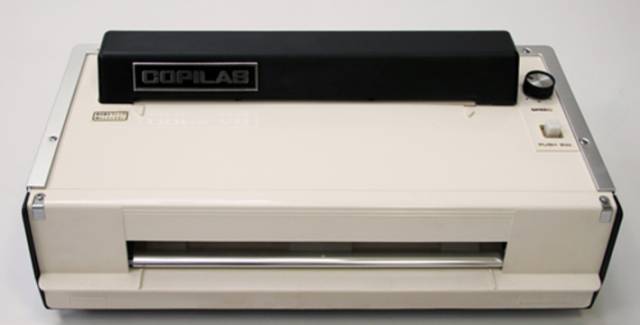
Arcade and consoles: big business
If we talk about Nintendo arcade machines, the first example that comes to mind is that of Donkey Kong, manufactured in 1982, but the truth is that, as Florent Gorges explains well in volume 1 of The History of Nintendo , the company is one of the pioneers in the creation of arcade machines in Japan.
As we mentioned above, light guns were a revolution which, together with the boom in pistol shooting competitions, made the man of a thousand ideas, Hiroshi Yamauchi, want to try his luck with a new proposal: simulations shooting with light rifles and projectors at stations located in old bowling alleys. Although the idea was a good one and the company came to receive a large number of orders for what they came to call the Laser Clay Shooting System, the 1973 oil crisis prevented it from being carried out.
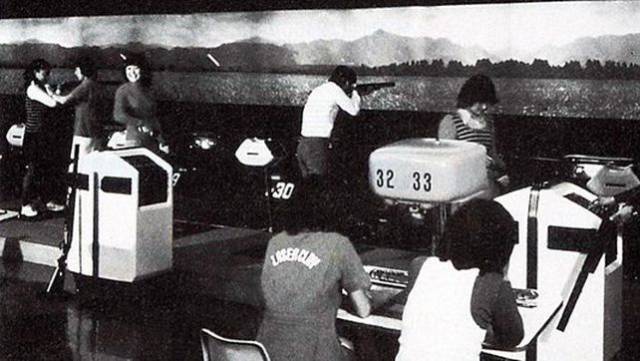
Although it was a very hard stick for the company, Nintendo was able to keep going by doing what it does best: reinvent itself. Thus, he created a mini version of the Laser Clay, in addition to other machines in the same line and related both to the use of light weapons, highlighting the Simulation System series: Wild Gunman or Fascination, and EVR video technology. Nintendo's career as a creator of arcade machines reaped great successes like the aforementioned Donkey Kong, but it was all thanks to the machines that preceded it as Computer Othello, successful in allowing users to measure themselves with a computer; Test Driver; SF-Hisplitter, which cost the company a lawsuit by Taito for looking like Space Invaders; among other.

Be that as it may, the rise of these machines increased the demand of households for having home consoles and, as expected, Nintendo did not want to miss the opportunity and embarked on what is undoubtedly another of the great businesses of all its history.
Expanding possibilities with accessories and peripherals
Although the company's first major home console was NES, Nintendo developed the famous Color TV Game, in addition to the successful Game & Watch, a series of portable consoles that caused a veritable rampage in the 1980s from which many other companies took note and they tried to replicate with their own machines without the same result.
Back to NES, we find the curious case of Famicom Robot, better known as R.O.B in the West. This cute robot-shaped accessory was created by Gunpei Yokoi in 1984, and although its usefulness remained in the compatibility with nothing more than two games, it has gone down in history as a key part of the strategy for the gaming industry. video game did not disappear, at least outside Japan.

After the video game crisis of 1983, caused by the poor quality of the latest video games created by Atari, no company wanted to know anything about them again. There were many who invested large amounts of money to buy consoles and video games that later did not sell, because customers got tired of consuming such bad products. In that same year, the Great N developed Famicom, known outside the Japanese territory as the Nintendo Entertainment System. During its first year of life, it was a moderate success, because, despite the fact that the console had advanced technology, it had some technological flaws and the company focused on reproducing some of its greatest successes in the field of gaming machines such as Donkey Kong or Popeye.
After muddling through, Nintendo embarked on the conquest of the North American market, especially damaged by the video game crisis. To do this, he decided to bet on a marketing campaign focused on the robot and a light gun called Zapper that was compatible with a greater number of games than was his beloved companion. In this way, NES became, at least initially, more a toy than a console and managed to revitalize a market that was about to disappear.
 The Old Robot Photo
The Old Robot Photo
Going forward, the company has continued to develop a large number of accessories and peripherals that, depending on the case, have achieved greater or lesser success. Leaving aside the accessories that came with Nintendo consoles but were not developed by the company like the Power Glove, in the late nineties we found more curious examples in Game Boy. Here are the Game Boy Camera and the Game Link Cable that, although they had a moderate success, raised the laptop even more as an unusual case of console, since, until the launch of Nintendo DS, in addition to holding the record of being the console best-selling laptop in history, noted for being compatible with the smallest digital camera in the world at the time.
Many players will remember these accessories with a special fondness, especially the second one that allowed them to play in multiplayer and exchange Pokémon with their friends. Returning to the Game Boy Camera, it should be noted that it had to be used in combination with the Game Boy Printer if you wanted to make the most of its capabilities, since the images retouched with the camera software could be printed thanks to this curious printer small in size.
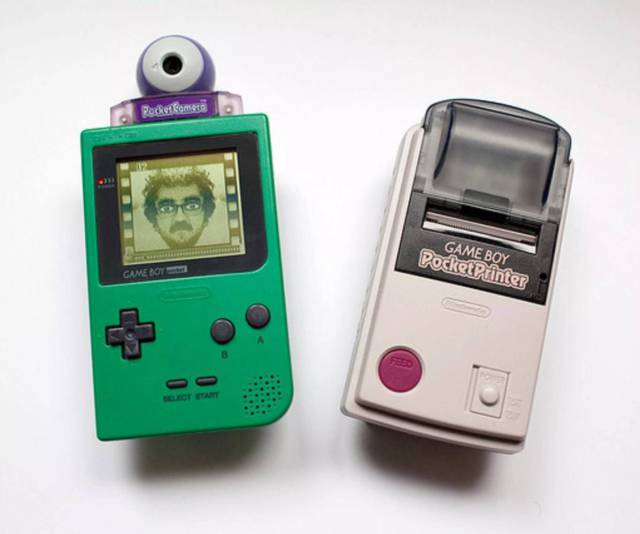 Bonus Stage Magazine Image
Bonus Stage Magazine Image
If we advance a little in time, we have another great example of the originality of Nintendo when it comes to developing toys compatible with its consoles and video games. Although it is rather a control system, the DK Bongos made it possible to enjoy the games of Donkey Konga and Donkey Kong Jungle Beat with the GameCube as early as the 21st century, as we do, for example, the famous series of games Taiko no Tatsujin, that is, hitting two barrels, only that, instead of drums, the bongos were practically identical in shape to the barrels thrown by the famous ape.
From then on, dozens are the examples that we can find in the rest of the Nintendo consoles of accessories, peripherals and curious controls that have transformed our way of experiencing and living video games. We stop to mention some more of Wii for being, probably, the most recent console of the company that has to its credit with one of the strangest accessories such as the Wii Vitality Sensor, which was not finally launched and that promised to measure the pulse of players in different games.

Innovation will continue
Amiibo, Nintendo Labo, Ring-Con … Since its inception, Nintendo has been synonymous with many things, but especially reinvention. It is a company that has tried to reach many markets with different results, but has managed to consolidate its site into one: the video game industry. It is clear that the Big N continues to want to innovate, because, in part, it continues to seek what is part of its corporate social responsibility: always wanting to give smiles to all those who come into contact with its products. The next step to do it will be LEGO Super Mario.
It is a series of sets made up of LEGO pieces that will be inspired by the most famous scenes and elements in the universe of the famous Nintendo character. If we have not talked about the N&B Blocks product of the Big N before, it is because it is curious that now, decades later, both companies work together when they had the odd legal battle in the past.
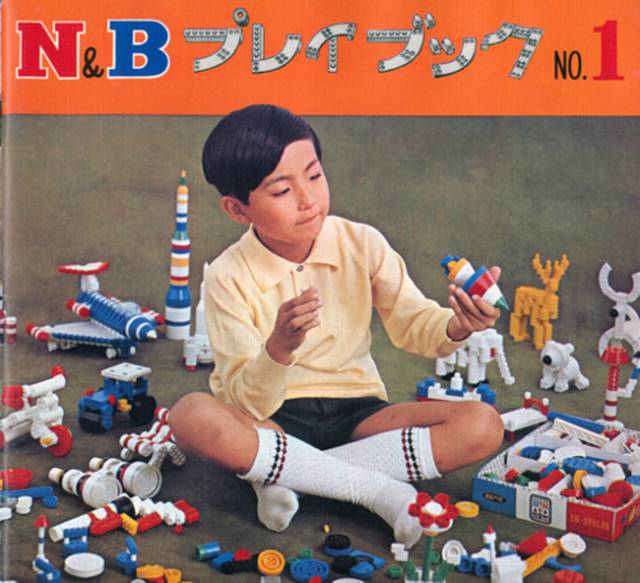
And it is that, in 1968, the Great N launched to the market also known as Nintendo Blocks, a set of construction games that were directly inspired by the famous blocks of the LEGO company. Its great similarity caused the Danish company to take Nintendo to court, achieving a victory in favor of the second, since the small differences included in the pieces of the Great N made the interposed lawsuit not go ahead. Despite this, the streak did not last long for Nintendo. Although they were more stylized and elegant, their pieces had less quality and were more difficult to assemble with each other than those of Lego, so, in addition to other reasons, the Japanese company stopped manufacturing them.

